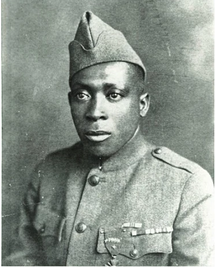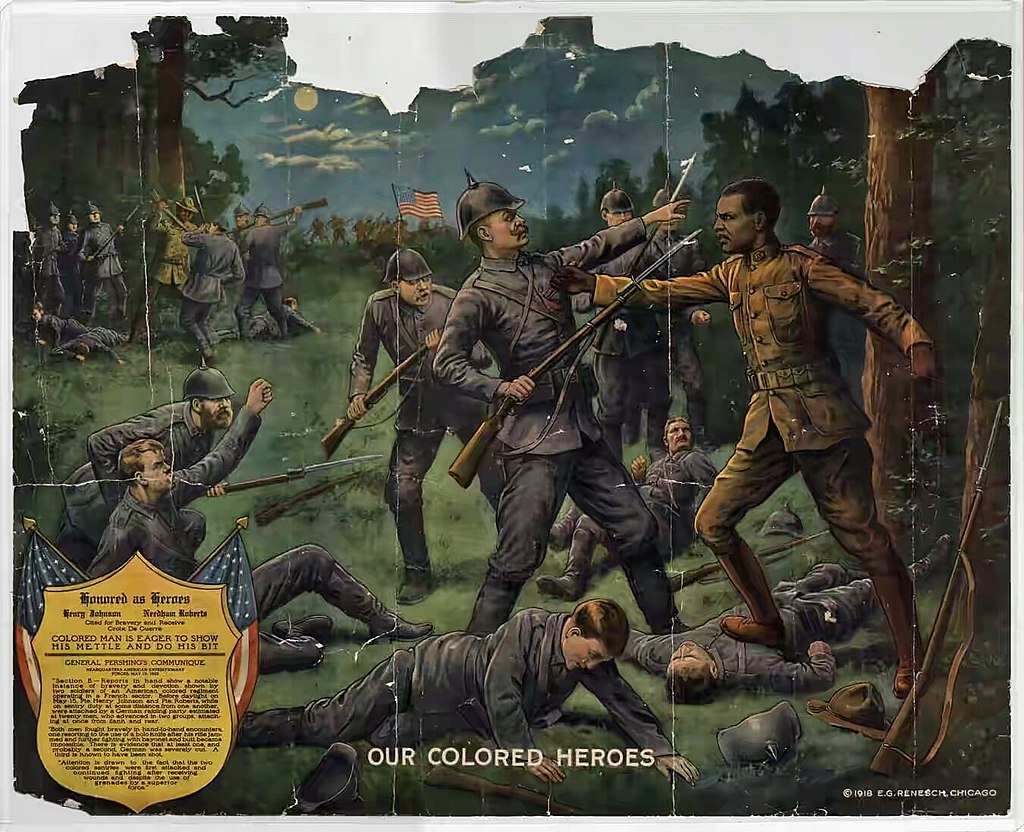|
On this day in history, May 14th 1918, an incredible act of heroism was performed that earned perhaps the most badass nickname ever bestowed upon a US Soldier. 102 years ago (William) Henry Johnson, fighting for his country, his friend, and his life, gained the moniker "Black Death". Click below to read more! Despite numerous examples of honorable combat service by all-black units since the Civil War, the segregated units of the AEF found themselves treated rather badly by their own Army and primarily were used for labor. It may have been seen as a blessing then when the 369th was attached to the French Army for the duration of the war, where they appear to have been treated as equals. As part of this, the men received French helmets, rifles, and equipment, but retained their US uniforms. This move to French control however came at a high cost -- the regiment spent more time in frontline trenches, and suffered more casualties, than any other American regiment during the war. The French recognized this sacrifice by awarding the Croix de Guerre to both the regiment, as well as 170 individual officers and men.
This Model 1917 Bolo Knife is likely what is referenced in the official military account of Sergeant Johnson's action, although it quite possibly could have been the earlier less common (and extremely similar) Model 1910 or something else of the sort. These bolos were issued primarily as tools for use in cutting down brush, cleaning firing lanes, and other chores that calls for a broad and heavy chopping blade. These were not issued to every man, but instead spread throughout an Infantry Company like other speciality tools such as mattocks, axes, and wire cutters.
The Model 1917 is a simplified and more roughly finished version of the Model 1910 Bolo. Instead of being produced by Springfield Armory they were instead made by a number of commercial contractors including the Plumb tool company's factory in Philadelphia, PA. Carried in a wood and rawhide scabbard, covered by a canvas and leather scabbard cover, the tool can be kept easily at hand on a belt via the standardized loop-and-eyelet system. While primarily intended as a utility tool, Sergeant Johnson proved the effectiveness of the Model 1917 Bolo as a close combat weapon. This of course would come as no surprise to groups like the Nepali Gurkhas, who have historically wielded a similar shaped blade -- the khukuri -- as their iconic utility and combat weapon. Despite this innate familiarity with the weapon type, they undoubtedly would respect Sergeant Johnson's bravery and effective use of the weapon type.
0 Comments
Leave a Reply. |
Jon K.Weapons collector, history buff, Army officer, Pug enthusiast. Archives
December 2020
Categories
All
|





 RSS Feed
RSS Feed
